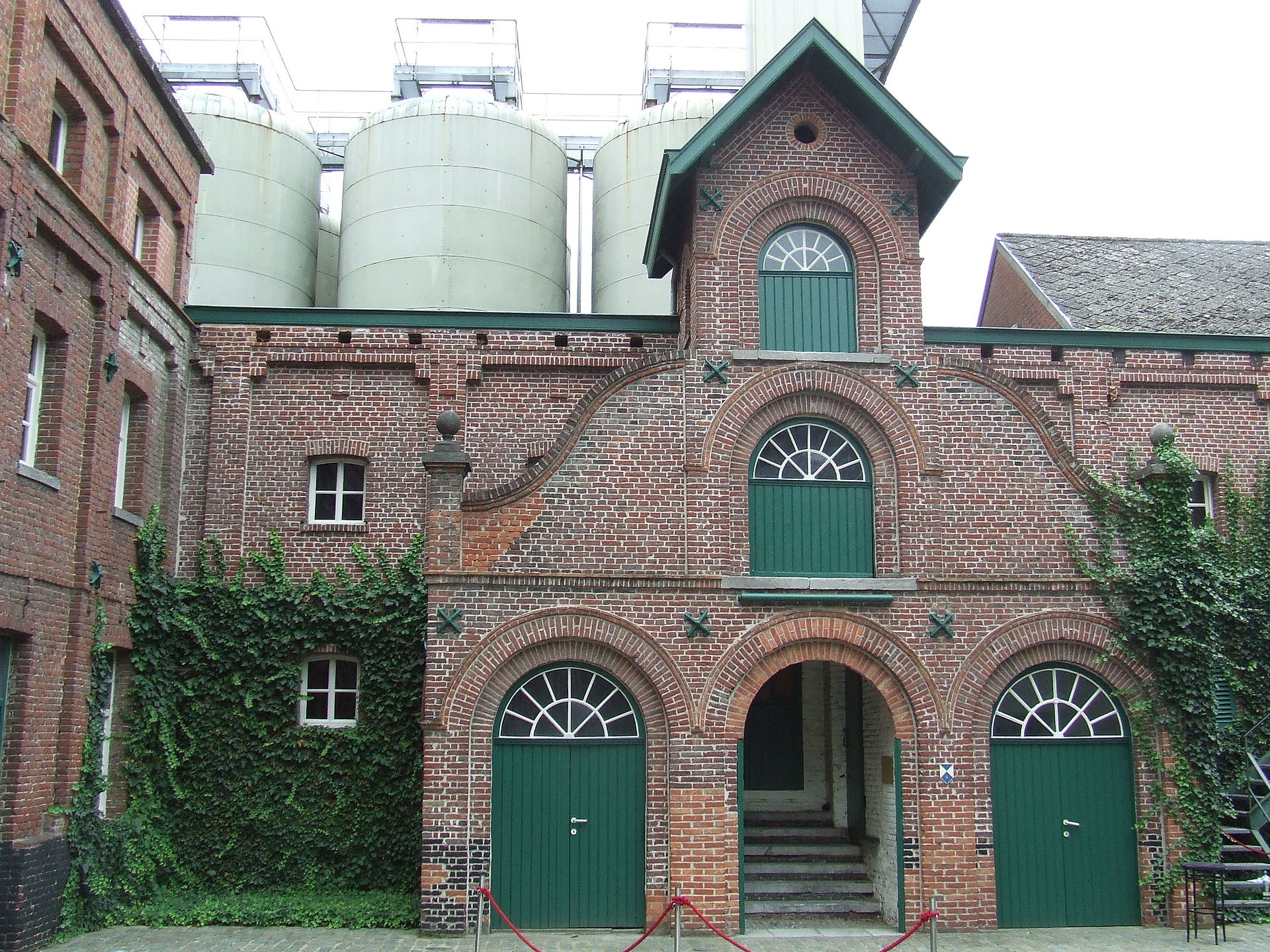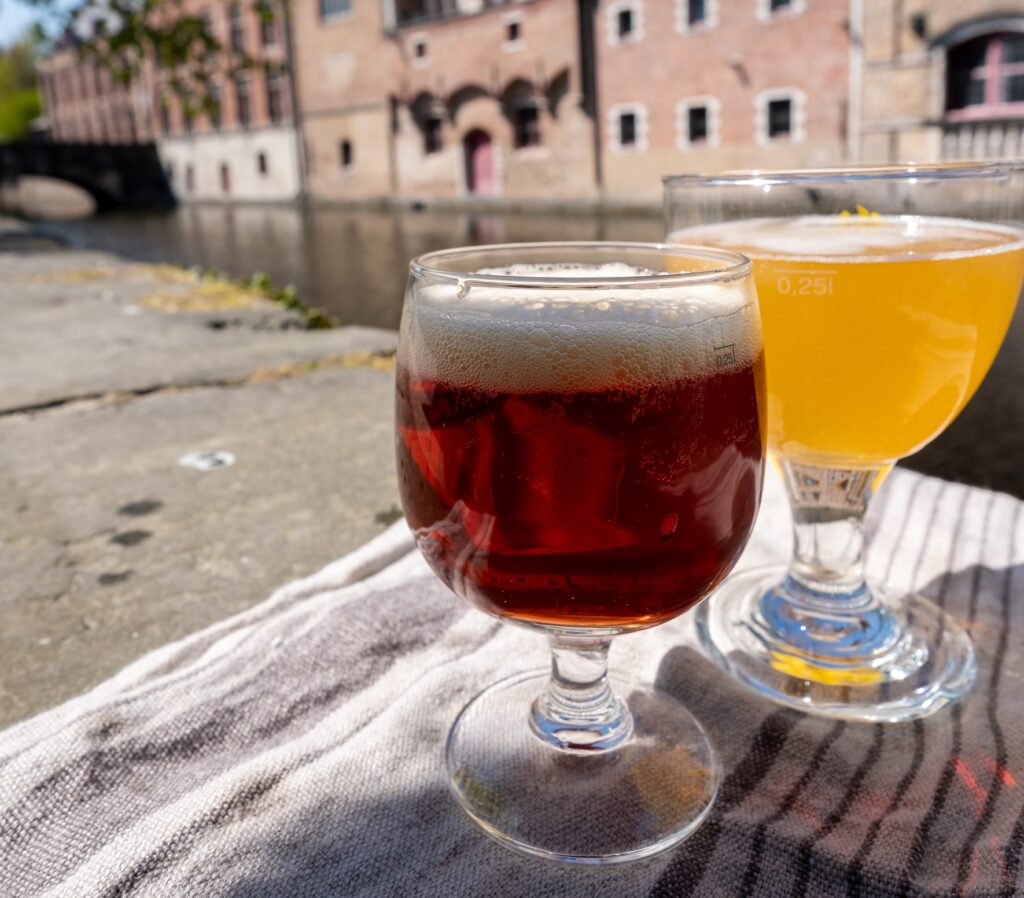In 2011, a photograph of a grey terraced house in Belgium with two incredibly pointed steeples – a house completely different from all the houses on the rest of the street – kicked off a project by media consultant Hannes Coudenys called Ugly Belgian Houses.
It became an Instagram phenomenon and eventually a published book. “Take comfort in the fact that being ugly is at least better than being boring,” the copy on the back cover of the book proclaims.
Coudenys was not the first author to reference the overall effect of his country’s architectural mishmash. In 1968, Renaat Braem, a leading Belgian architect and urban planner in the latter half of the 20th century, published a book about Belgian architecture in which he vented his criticism of the spatial disorder of Belgian cities. The book’s title was België, het Lelijkste Land ter Wereld. In English: Belgium, the Ugliest Country in the World.
Taste in design is subjective, of course. But what people seem to see as ugly in Belgium is its violently extreme patchwork of architecture, a kind of chaotic diversity that is challenging for the human mind to process. As it happens, this is not unlike the idiosyncratic nature of its beers.
In fact, some of the words used by visitors to Belgium to describe its architecture – quirky, characterful, complex, and intense – are the same ones used by many beer enthusiasts to describe the country’s beer.
Shared strangeness
Initial interactions with Belgian beer can certainly feel strange, borne out in scenes witnessed: Czechs visiting Belgium asking for a “real beer”; English tourists in Bruges complaining to bar staff and asking for refills because only half of their glasses contained beer, the other half filled with what they felt was wasteful foam; Americans raising an eyebrow at alcohol levels when they see Belgians at lunch with a Cuvée van de Keizer, or a Rochefort 10, or a Dubuissson Bush, beers with ABVs of 11%, 11.3%, and 12% respectively.
Belgium is the nation most connected to spontaneous fermentation, where brewers like Paul Girardin and Heidi Abraham let what is in the air around them do the work of character-building in their beers. It’s the place where bottles of Brut beer from the Malheur brewery in Buggenhout undergo a rémuage, dégorgement, and secondary fermentation, in a process similar to Méthode Champenoise.
It’s the country where, for centuries, spice cabinets, herb gardens, and fruit trees, have all been raided by brewers for ingredients. As a beer enthusiast reading this, you may know that.
Overwhelming patchwork
This overwhelming patchwork is there in abundance: from the flat woody acidity of mature Lambic to the dry cut of Saison; from the wine-like richness of Oud Bruin to the boozy apricot esters of Abbey-style ales; and from the crisp, sometimes sweet maltiness of Belgian Lagers to the refreshing spice of the Witbier.
Similarly, first encounters with Belgian architecture offer strangeness by the bucketload.
The Atomium, for example, is a landmark in Brussels that balances nine steel-clad balls on a bunch of sticks. Antwerp’s Palace of Justice has a series of giant spikes pointing out from the top and looks from above like a butterfly fanning its wings. Ghent’s asymmetrical city pavilion, nicknamed by locals as the Sheep Shed, contrasts starkly with the medieval buildings around it, four concrete legs that support a wooden roof with a crooked chimney and hundreds of lights.
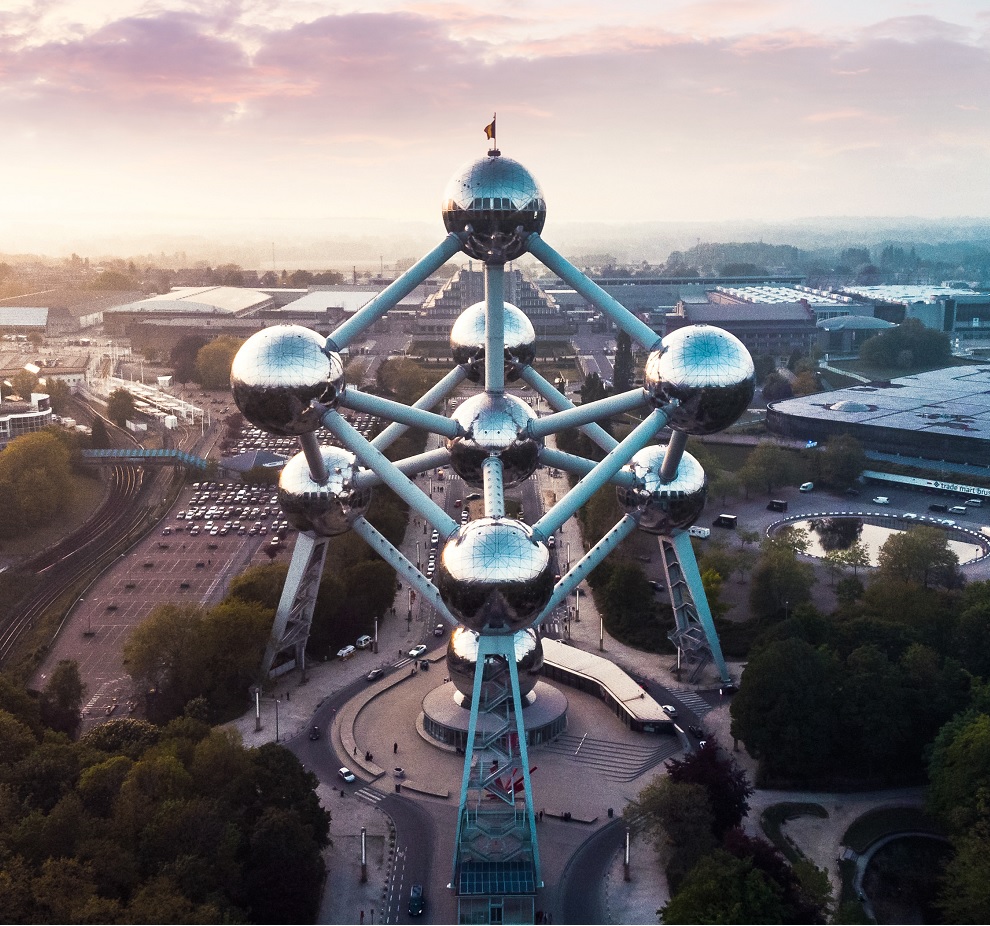
The Atomium
Belgium also has a penchant for Brutalism, particularly in its university buildings from Liege to Leuven, many of which look raw and unfinished. Sint Rita Church in Harelbeke designed by Léon Stynen, for example, is an isolated monolithic structure with vertical concrete columns, diagonally mounting walls, and an inclining floor surface. From the outside, it has an intimidating aesthetic. From the inside, it’s a set from an alien abduction movie.
Those that came
Sometimes, it feels like every country and their dog have ruled Belgium – the Romans, the Norse, the Burgundians, Spain, France, Austria, and the Netherlands. Belgians ran with whoever was in town and made it work, including embracing whatever design ideas were presented.
The hefty columns and semi-circular arches of Romanesque architecture can still be seen in the Collégiale Sainte-Gertrude in Nivelles. Tournai’s Cathedral demonstrates soaring Gothic vaulting. Medieval belfries remain in numbers today, such as that found in Bruges. The Catholics introduced ornate baroque decoration to Antwerp’s St-Carolus-Borromeuskerk. And when the Austrians ruled, everything began to take on a cold, rational, neoclassicism.
In the same way, Belgians have subsumed brewing ideology from all directions. Like their compatriot architects, they have not copied these influences, but rather have incorporated them into their production practices to create something new and unique that works for them.
It’s believed that Eugène Rodenbach was inspired by the wooden tuns used for maturing London Porter when he focussed on ageing beer in the 294 large oak foeders that are found at the Rodenbach brewery in Roeselare today.
The recipe for Orval was conceived by German brewer Martin Pappenheimer. His Belgian assistant John Vanhuele, who had spent years brewing in Britain, suggested dry-hopping Orval and adding a wild yeast called Brettanomyces (Greek for “British fungus”).
Belgian brewers have borrowed extensively from the Lager traditions and quality control of their German colleagues to the east, and from the knowledge and creativity that French winemakers to the west had achieved in working with wood, acid, and fruit.
In this way, there’s a link between the way Belgian towns and cities look and the way the country’s beer tastes: one which showcases the multifarious nature of the Belgian way of doing things, a mishmash of the elegant and the functional and the workaround from a place where Germanic pragmatism meets Gallic emotion, and where borders and languages and rules are both forced on you and invited in.
Opportunistic
Beer touches almost all aspects of Belgian culture, and brewers in Belgium are opportunistic, so it’s no surprise that beer raises its head from some of the country’s most important architectural structures.
Brouwerij Kazematten in Ieper (Ypres) is housed in cave-like casemates which were built by French military engineer and architect Sébastien Le Prestre de Vauban in the 17th century as city fortifications. The space where the brewery is now located was used during the World Wars as a shelter for British troops.
While the location doesn’t directly impact the beer’s taste – their inherited Grotten Santé “cave beer” is conditioned in coned stainless-steel tanks and not caves—the experience of drinking there in the cool stone cellars, First World War bullet holes visible above the tanks and the bar, adds extra context to the sense of place and to the war history those in the region have endured.
In Bruges, the castle-like buildings throughout the city centre, many of which are UNESCO-protected architectural heritage, prevented De Halve Maan brewery from expanding, and so they constructed a beer pipeline from their brewery on Walplein to a bottling facility in an industrial park outside the city centre.
The underground pipe – which took four years and cost €4 million – is two miles long, and transports 1,000 gallons of beer every hour. While the beer hasn’t changed, it means De Halve Maan’s beer flows under the houses and public spaces of Bruges and that the city’s biggest brewery can produce more beer for its people without moving its kit away from its home.
Important breweries have had an impact on the architecture of certain cities. A company called “Ar(chi)pentage” operates tours to show “how beer-making has transformed the Belgian landscape”, guiding people around beautiful old breweries such as De Hoorn in Leuven, Lamot in Mechelen, and Wiels in Brussels, all of which have been repurposed as cultural centres.
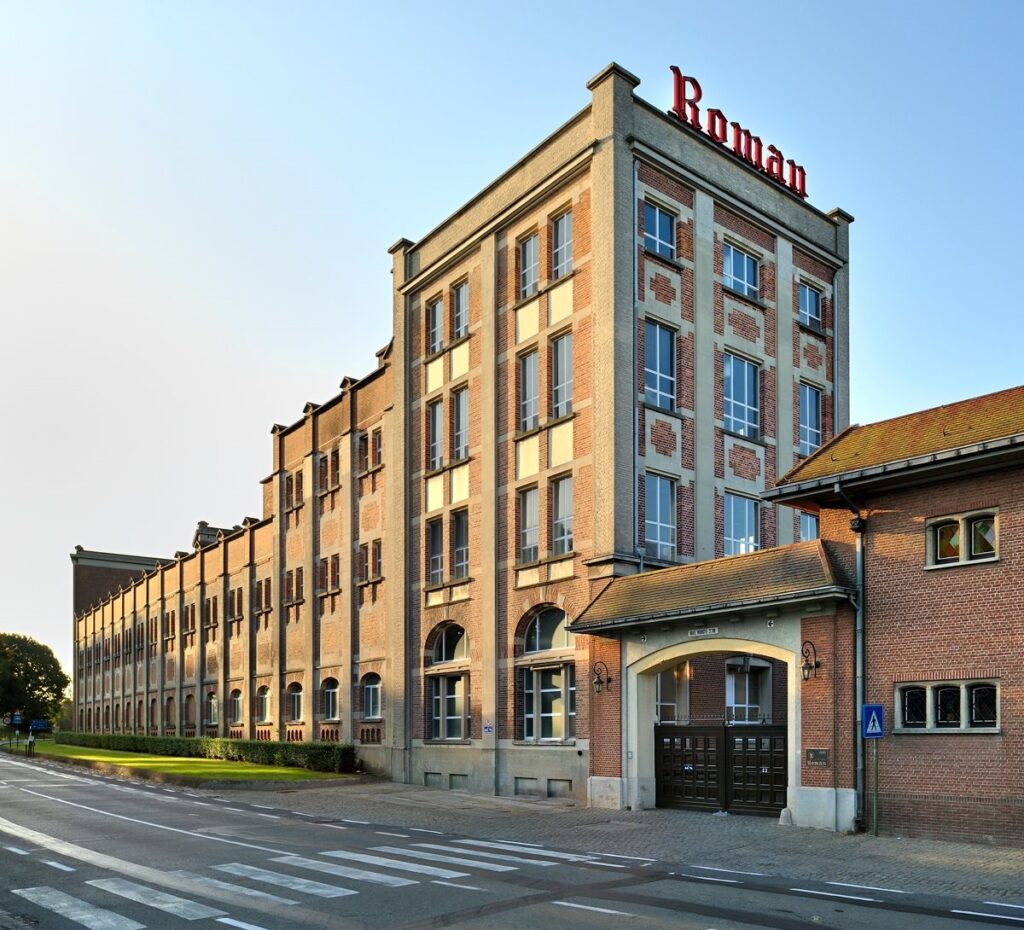
Brouwerij Roman in Oudenaarde
Brouwerij Roman in Oudenaarde, with its large, decommissioned steam engine, is the oldest existing family brewery in Belgium, dating back to 1545 as an old coaching inn on the main road threading across Belgium between Germany and France.
Brussels Exchange
The Brewers House, a meeting place for the Brewers’ Guild since the 16th century, is one of the most striking buildings in Brussels.
The building houses the Brussels Exchange (known in the city as the Bourse in French and Beurs in Flemish) was completed in 1873 and sits at the centre of the old part of the city. It was part of a large city beautification project, head architect Léon Suys opting for a neoclassical approach to emphasize the city’s aspirational economic strength.
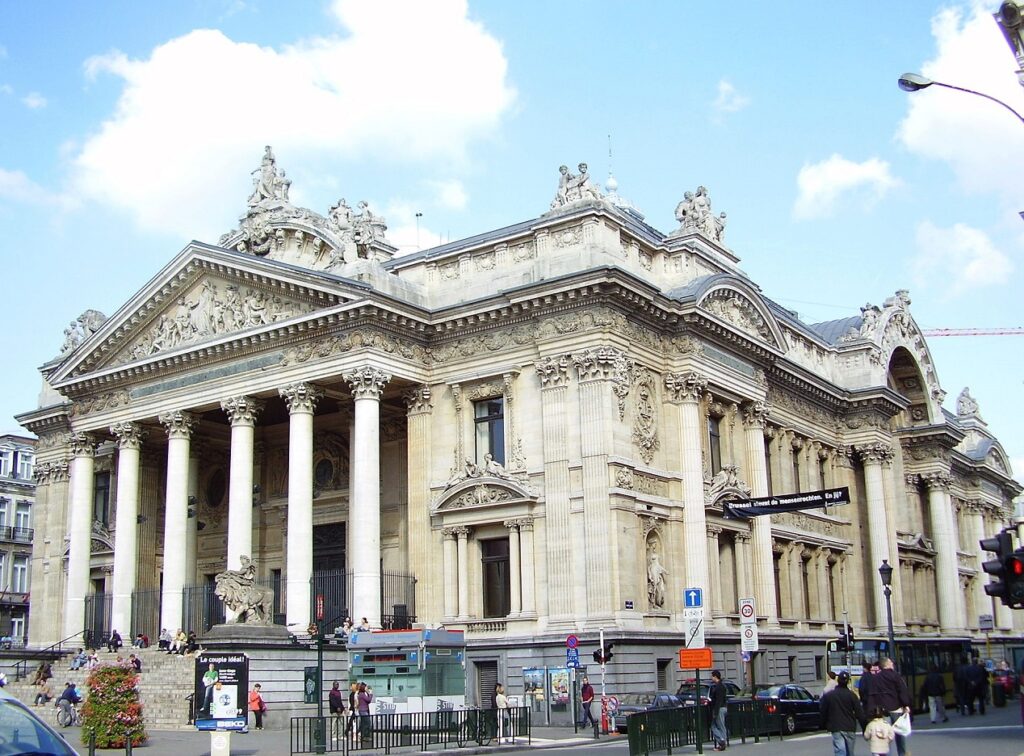
The Bourse, home of the new Belgian Beer World
To make a statement, Suys enlisted the help of sculptors Jacquet and Auguste Rodin, the brothers adorning the exterior with Greek Doric columns and raised elements depicting the city, baby angels, and lions.
The Exchange at the Bourse finally closed in 1996 with the onset of electronic trading, and since then, the building has become a venue for concerts and graphic expositions. But it is in the process of remodelling for a different future: after much delays, it was set to open in September as Belgian Beer World, a museum setting out the traditions of Belgian brewing to visitors from all over the world and showcasing beers from hundreds of breweries across the country.
But although the decision to repurpose the Bourse is recent, the building itself always seemed destined to celebrate beer. Four of the Rodin brothers’ original statues on the front of the Bourse signal central elements in Belgium’s brewing heritage, representing the sectors of art, agriculture, industry, and science. It’s an unintended but fitting reference to its new purpose.
Understated
Despite all the grandeur, Belgians are absolutely an understated people, so there’s plenty of room for simplicity in the physical spaces in which they drink their beer. To the non-Belgian eye, those spaces can be strange too. Traditional “brown cafés” in Belgium—so named for their propensity for wood and in some cases, tobacco stains—represent Belgian beer’s most unsung heroes, and like the beers they are serving, these institutions come with their quirks.
In Den Bouw is a farmhouse café located amongst fields in Kalken which was built in 1865 with a worn Aga stove, enamel beer signs, and a series of old clocks. Since the 1980s, the owner Christine Van Der Heyden has organised art exhibitions in a barn out the back.
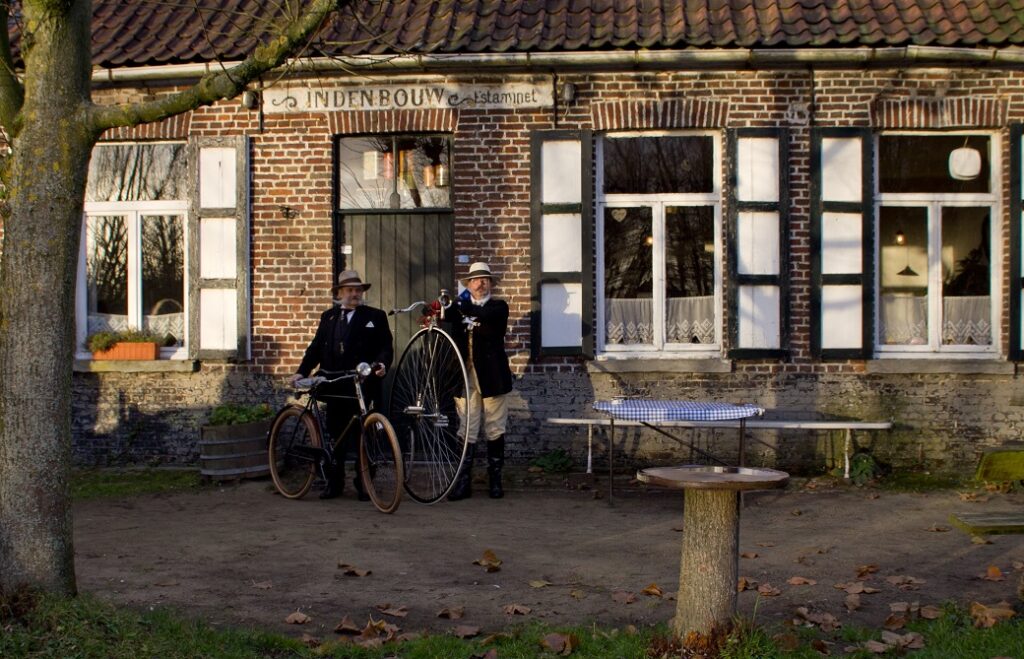
In Den Bouw
These types of features are shared by lots of characterful cafés: The Oud Arsenaal in Antwerp and its marble bar; ‘t Half Souke in Antwerp with its minimalist wooden decor and uneven tiled floor; De Penge in Turnhout with its neatly arranged smoking pipes, clipped to the wall for easy selection; Café Welkom in Wintershoven which has cages for the Belgian rural pastime of rooster crowing competitions; and Herberg De Drie Koningen in Houtave with hand-painted wallpaper and hundreds of ceramic chamber pots hovering from the ceiling.
Several people have lived across the two worlds: architects influencing the world of beer.
Henry Vaes was a Belgian architect from Antwerp. His friend became a Trappist monk and then asked Vaes to lead the design and reconstruction of the old Cistercian Abbey of Orval which had been destroyed by a fire in 1793. Vaes not only designed the Abbey, but also the cheese factory and the brewery, drawing his inspiration from the ruins of the Abbey in Villers-la-Ville.
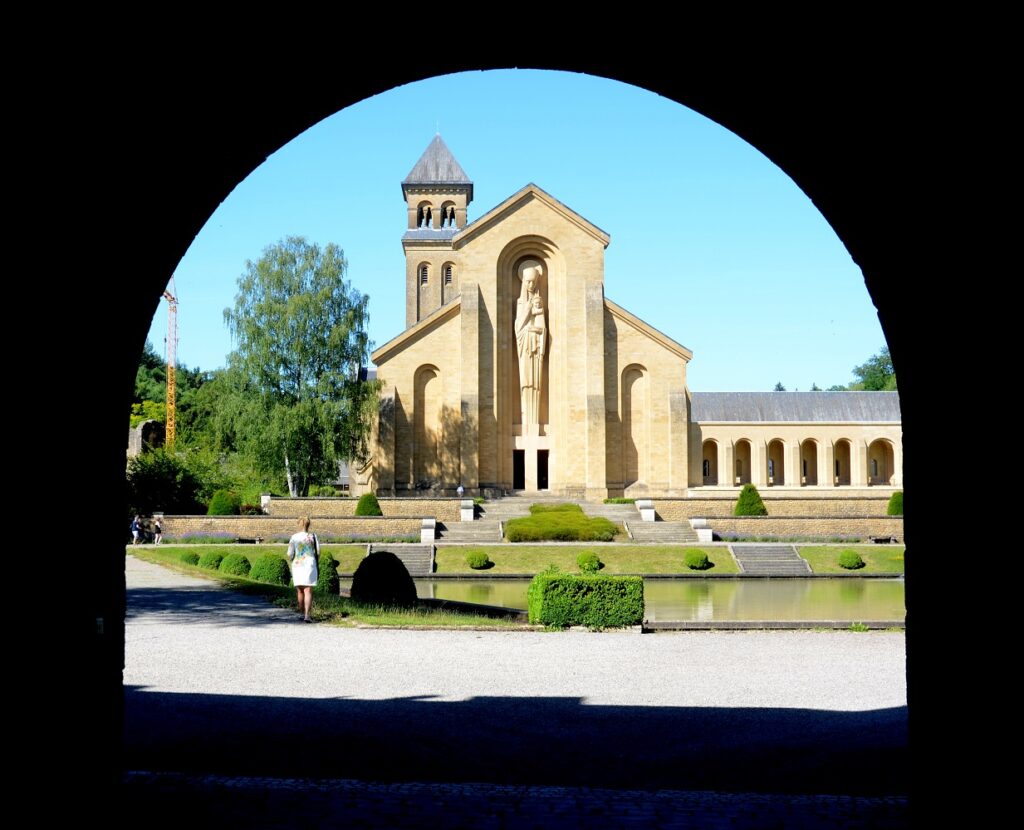
Orval Abbey
The first stone was laid on August 20, 1929, and the new Abbey was completed in 1948. The brewery was finished in 1931, however, and on May 7, 1932, they shipped beer for the first time away from the brewery: a fruity, dry-hopped Amber Ale of 6.2% ABV which was conditioned with wild yeast.
It was the first Trappist beer to be sold nationally around Belgium. Under request from the Abbey, Vaes also designed Orval’s unique skittle-shaped bottle and its thick-stemmed, silver-rimmed, triangular chalice glass, indisputable works of timeless design which live on today on the tables of cafés all over Belgium.
Then there’s Kris Herteleer. Before Herteleer opened De Dolle Brouwers in Esen in 1980, he obtained a diploma in architecture from the Municipal Institute for Architecture and Urban Planning in Ghent and then a postgraduate qualification from the College of Europe in monument preservation and conservation.
The brewery that he bought dated back to 1835, an industrial relic with archaic architectural features which he still uses for brewing today. It has a wooden mash tun with perforated madammen disks, a raised copper kettle enclaved in brick, a large shallow coolship, a Baudelot heat exchanger, and a tiny windowless room with deep concrete baths for open fermentation.
The brewery is full of poky alcoves, spaces Herteleer has converted into a location for his hop fridge and another for his laboratory. On a brew day, he must negotiate low ceilings and tiny rusty ladders. Up until a few years ago, Herteleer’s mother Moes – who passed away in 2021 at 103 years of age – led tours of the brewery. Today, he takes tours himself, always in pointed purple shoes, a flowery polka-dot bow tie, and a smoking jacket covered in cartoon depictions of a yeast cell.
Duality
Both Belgian architecture and Belgian beer can seem strange when you first encounter them. In Ancient Chinese philosophy, there’s a concept of dualism known as yin and yang which describes how seemingly opposite or contrary forces may be complementary, interconnected, and interdependent in the natural world, and how they may give rise to each other as they interrelate to one another. Do you need strangeness to enjoy familiarity? Can something perceived as ugly become completely beautiful to the same person?
Those “ugly” buildings can cast their charm over you. But the argument for straight-up beauty is there separately: in the sublime and the ground-breaking amidst the grandeur of Antwerp Central station, the futurism of Liège-Guillemins, and the cruciform design of the Berlaymont Building.
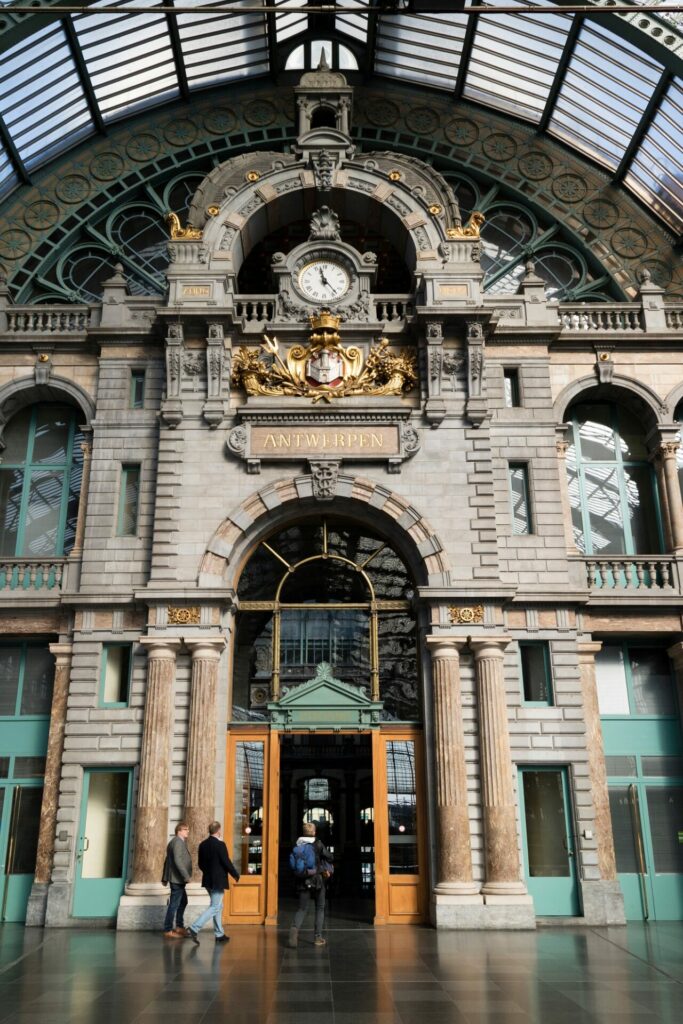
Entrance of the Antwerp Central railway station
It’s there in the country’s Art Nouveau, a movement that started in Brussels as a reaction against the formality of academic art, with Belgian architects such as Victor Horta, Henry Van de Velde, and Paul Hankar, all using iron and glass to open larger interior spaces to light, curving decorative lines that flow across buildings, mosaic floors, and designs inspired by natural forms.
It’s there in the Art Deco brilliance of Bozar, Flagey, and Villa Empain: no frills, all symmetry.
And then, when you stop for a Belgian beer, the yang of Belgium is in the dry lemony spritz of Drie Fonteinen Oude Geuze, the tangerine and pepper bite of Saison Dupont, the creamy banana-esque mouthfeel of Westmalle Tripel, the simple sweet and sour refreshment of Strubbe’s Ichtegem’s Grand Cru, or the simple, understated malty embrace of De Konnick’s Bolleke.
Ugliness
In 1987, 19 years after publishing Belgium: the Ugliest Country in the World, Renaat Braem published his memoirs. In this new book, he wrote about a utopia, an imagined society of perfect qualities created by the combined lessons offered by the art styles of cubism, purism, constructivism, surrealism, and expressionism. He expressed hope that architects, muralists, scientists and technologists would strive to realise immeasurable possibles in a new, total, all-encompassing art.
His words could easily be applied to brewers of Belgian beer, its idiosyncrasies coalescing to realise immeasurable possibles of pleasure for the mind and the senses.
The title of his memoir about Belgium and its architecture was Het schoonste land ter wereld. In English, it translates as “The most beautiful country in the world.”

